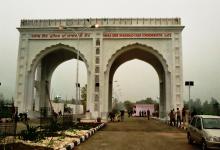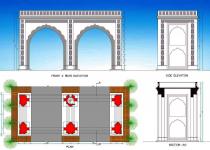SYMBOLS OF SUPREME SACRIFICE:
COMMEMORATIVE GATES AT FATEHGARH SAHIB
Architect: Sarbjit Singh Bahga in association with SS Sekhon
In the last week of December 2004, the entire Sikh community and the Government of Punjab celebrated the tercentenary of the martyrdom of Sahibzada Zorawar Singh and Sahibzada Fateh Singh–the two younger sons of Guru Gobind Singh. They were buried alive in 1704 at the age of 8 and 6 respectively in Sirhind (Fatehgarh Sahib) by Nawab Wazir Khan–the then ruler of Sirhind for their refusal to accept Islam as their religion.
To mark the tercentenary of martyrdom of Sahibzadas the Government of Punjab has constructed four Commemorative Gates at the entry points of the historic town of Fatehgarh Sahib, that is, on the (1) Chandigarh-Fatehgarh Sahib Road, (2) Morinda-Fatehgarh Sahib Road, (3) Patiala-Fatehgarh Sahib Road, and (4) Madhopur Road. These four Gates are dedicated to four brave personalities who crossing their religious lines showed their reverence to Guru Gobind Singh in their own ways and supported the cause for which Guruji fought against Mughals. They are (1) Baba Banda Singh Bahadur, (2) Baba Moti Ram Mehra, (3) Diwan Todar Mal, and (4) Nawab Sher Mohammed Khan.
Baba Banda Singh Bahadur was a disciple of Guru Gobind Singh who after the death of Guruji in 1708 launched an armed campaign against Mughals and succeeded in establishing his independent rule over the eastern and southern Punjab. Though he spent eight years from 1708 to 1716 in fighting against Mughals, yet he was the person who raised the social status of the down-trodden shudras and placed them on equal level with those of the upper classes in his administration. He abolished the zimidari system and made the sons of the soil-the actual cultivators- the proprietors of their holdings. And it was he through whom the people of Punjab discovered the path of consequent and practical freedom. The gate at Chandigarh-Fetehgarh Sahib Road or Chunni-Machhli Road as it is locally known has been dedicated to Baba Banda Singh Bahadur- the great soldier of Guru Gobind Singh. The Gate has been constructed by the Punjab Urban Development Authority (PUDA).
The second Gate has been constructed by the Markfed. It is located on Morinda-Fatehgarh Sahib Road and is named after Baba Moti Ram Mehra. He was the person who without caring for his life served milk to the Sahibzadas and their grandmother Mata Gujri ji when they were kept in the so called Thanda Burj prior to their martyrdom.
The third Gate is located on the Patiala-Fatehgarh Sahib Road between the G.T. Road and Railway Over Bridge. It has also been constructed by the PUDA and is dedicated to Diwan Todar Mal. He was a jeweler by profession and a courtier of Nawab Wazir Khan of Sirhand. In those trying times when the Sikhs were being persecuted for their faith, Diwan Todar Mal dared to come to the former’s aid and bought a piece of land needed for the cremation of Sahibzadas and their grandmother by covering it with Gold Coins.
The fourth gate has been constructed by the Warehousing Corporation. It is located on the Madhopur Road and has been named after Nawab Sher Mohammed Khan of Malerkotla. History states that when Nawab Wazir Khan of Sirhind asked Nawab Sher Mohammed Khan to take revenge from the captured Sahibzadas as Sher Mohammed Khan’s brother was killed by
the Sikhs of Guru Gobind Singh, he firmly turned down the offer and told the Nawab of Sirhand that his brother was killed in war and these minors have nothing to do with his brother’s killing.
These four Gates have been identically designed by the Department of Architecture, Punjab. “The design of the Gate has been conceived as an archway or deori and its architectonics echo the historic Sikh architecture in the town of Fatehgarh Sahib and its vicinity,” states S.S.Sekhon the then Chief Architect Punjab.
Each gate measures 23 x 9.80 metres and has a height of 15 metres. The gigantic gate has been designed to accommodate 7.30 metre wide dual carriage way along with 3.60 metre wide berm in between. The two archways measures 8.25 metre in width and 10.70 metre in height. The gateway incorporates 225 square metre roof slab supported on six mammoth pillars at a height of 13.30 metres. These pillars are joined together by large arches which not only give it the requisite strength to withstand the forces of elements but also impart a visual appearance in consonance with the historical built environment in the town. These multi-cornered pillars accommodate white-marbled seats at the ground level which are reminiscent of those in the deoris of old havelis of Punjab. The facades of these pillars are adorned with series of recessed blind-arches arranged vertically.
An over hanging eave runs all around the structure at roof level and castes shadow on the built mass with a beautiful effect of interplay of light and shade. The parapet above the eave is reminiscent of battlemented parapets of the historical Sikh shrines and embellished with recessed rectangular niches. The entire structure is finished in cement plaster and exterior emulsion paint of white shade. The monochromatic expression in white makes these gates belong to the historical Sikh architecture in the town. Two independent commemorative plaques have been built on either side of each gate. The plaques carry the historical background of great personalities on whom these are named.
The grandeur of the gates have been further enhanced by the planned landscape which includes newly constructed dual carriageway roads, footpaths in pre cast interlocking concrete blocks, plants and light lamps. Special efforts have been made to illuminate the gates at night. These edifices are a remarkable addition in the landscape of historic town of Fatehgarh Sahib and shall stand forever as testimony to the contribution of four great personalities not only to the Sikhism but to the entire humanity.
2003
2004
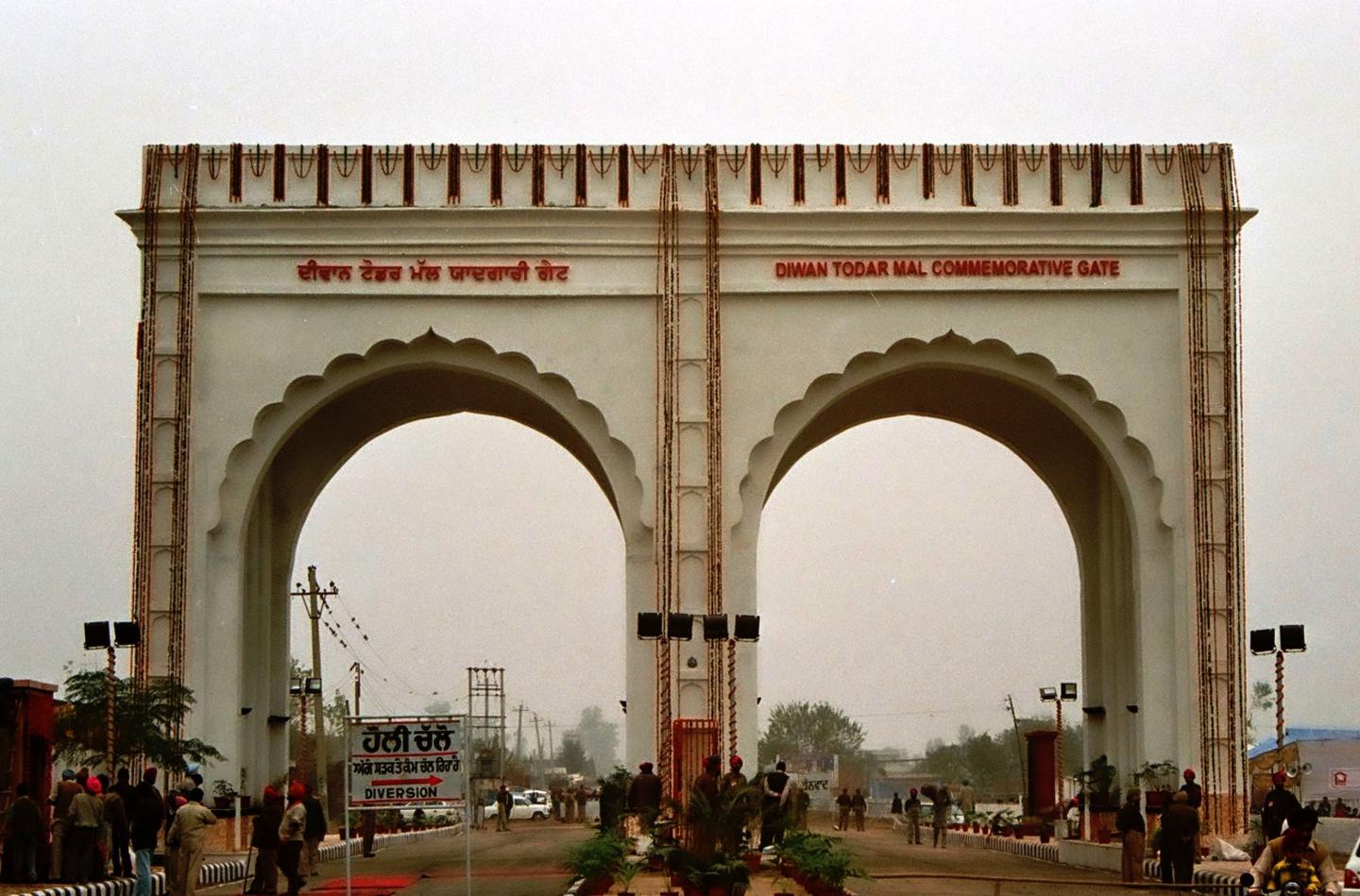
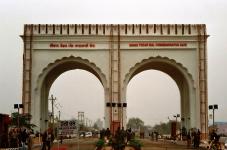
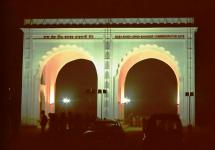
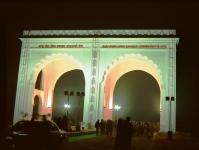
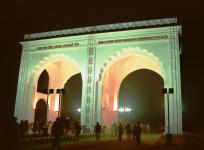
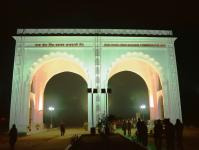
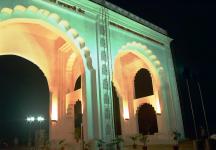
.jpg)
